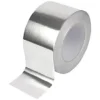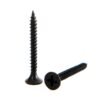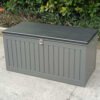Foam Insulation: The Smart Way to Keep Your Home Comfortable and Energy-Efficient
When it comes to keeping your home warm in the winter and cool in the summer, insulation plays a crucial role. Among the many insulation choices available, **foam insulation** stands out as one of the best options. But what makes it so effective? How can it save you money on energy bills? And is it worth the investment for your home?
In this blog, we’ll break it all down in simple terms. Whether you’re a homeowner looking to reduce energy costs or just curious about home improvement, this guide will help you understand everything you need to know about foam insulation.
What Is Foam Insulation?
Foam insulation is a type of insulation that expands and hardens after it’s applied, sealing gaps, cracks, and cavities in your walls, attic, or basement. Unlike traditional insulation materials like fiberglass batts, foam insulation doesn’t just sit in place—it **actively fills spaces** to create an airtight seal. This makes your home more energy-efficient and helps maintain comfortable indoor temperatures all year round.
How Does Foam Insulation Work?
To understand why foam insulation is so effective, let’s take a quick look at how it functions:
– **Expansion:** Foam insulation starts as a liquid. Once it’s sprayed or injected into place, it expands, filling even the smallest crevices.
– **Air Sealing:** Because it expands so thoroughly, it effectively seals off tiny gaps where air might leak in or out.
– **Thermal Resistance:** Once hardened, foam insulation acts as a barrier that reduces heat transfer, keeping warm air inside during winter and blocking heat from entering in the summer.
Types of Foam Insulation
There are two main types of foam insulation: **spray foam insulation** and **rigid foam insulation**. Let’s explore both to see which one might be the right fit for your home.
1. Spray Foam Insulation
Spray foam insulation is applied using a spray gun, allowing it to expand and settle into spaces before solidifying. This type is widely used in both **residential and commercial buildings** due to its superior sealing capabilities.
There are two subtypes of spray foam insulation:
– **Open-cell spray foam:** This is softer and more flexible. It is great for soundproofing and creates an effective air barrier.
– **Closed-cell spray foam:** This is denser and provides better thermal resistance. It also adds structural strength to walls.
2. Rigid Foam Insulation
Rigid foam insulation comes in solid panels, which can be cut and placed in walls, roofs, and floors. This type of foam insulation is commonly used for **exterior home insulation**, basements, and foundations.
– **Expanded Polystyrene (EPS):** Affordable and lightweight, but not as effective as other options.
– **Extruded Polystyrene (XPS):** Strong and resistant to moisture, making it great for exterior and basement insulation.
– **Polyisocyanurate (Polyiso):** Highest thermal resistance but more expensive.
Benefits of Foam Insulation
Why should you consider foam insulation over other materials? Here are some of the top benefits:
1. Significant Energy Savings
One of the biggest reasons homeowners opt for foam insulation is that it can dramatically reduce energy bills. Since it prevents air leakage, your heating and cooling systems **won’t have to work as hard** to maintain a comfortable indoor temperature, **saving you money** in the long run.
2. Exceptional Air Sealing
Unlike traditional insulation, foam insulation doesn’t leave gaps or seams. It conforms to the shape of walls and spaces, ensuring a **perfect airtight seal** that prevents drafts and cold spots.
3. Moisture Resistance and Mold Prevention
Foam insulation acts as a barrier to moisture, preventing water from seeping into your walls. This is especially important in humid areas, as moisture buildup inside walls can lead to **mold growth** and structural damage.
4. Increased Structural Strength
Closed-cell spray foam can **reinforce your home’s structural integrity** by adding rigidity to walls. This can be a valuable addition, especially in areas prone to extreme weather.
5. Soundproofing Benefits
Open-cell foam insulation helps absorb sound, making it an excellent option for those who want a quieter home. If you live near a busy road or have noisy neighbors, this can be a game-changer.
Where Should You Use Foam Insulation?
Foam insulation can be used in various parts of your home to **maximize energy efficiency**. Here are some of the best places to apply it:
– **Attics:** Prevents heat from escaping in the winter and blocks excessive heat in the summer.
– **Walls (Interior & Exterior):** Provides thermal and sound insulation while sealing gaps.
– **Basements:** Helps keep moisture out and maintains stable indoor temperatures.
– **Crawl Spaces:** Reduces drafts and keeps floors warmer during colder months.
– **Garages:** Helps regulate temperature if you use your garage as a workspace.
Is Foam Insulation Expensive?
Foam insulation generally costs more upfront than traditional fiberglass insulation, but **it pays off over time** through **lower energy bills and long-term durability**.
Here’s a rough cost comparison:
– **Fiberglass insulation:** $0.40 – $1.50 per square foot.
– **Spray foam insulation:** $1.00 – $6.00 per square foot.
While foam insulation requires an initial investment, you may see a **return on investment (ROI) within a few years** due to energy savings. Plus, foam insulation lasts significantly longer than fiberglass or cellulose, making it a **one-time insulation solution** that doesn’t need replacing anytime soon.
DIY vs. Professional Installation
Thinking of installing foam insulation yourself? While there are DIY kits available for small projects, professional installation is typically recommended for larger jobs. Here’s why:
**DIY Foam Insulation:**
– Suitable for small-scale sealing jobs.
– Affordable, but requires careful handling.
– Risk of uneven application leading to poor insulation.
**Professional Foam Insulation:**
– Experts ensure **even coverage and proper application**.
– Safer and more effective in large spaces.
– Higher upfront cost but leads to better long-term energy efficiency.
If you’re insulating your entire home, hiring a professional is often the best choice for **achieving the highest efficiency**.
Common Myths About Foam Insulation
There’s a lot of misinformation about foam insulation. Let’s clear up some common myths:
Myth 1: Foam Insulation Is Toxic
Truth: Spray foam insulation does emit chemicals during installation, but once it cures (within 24 hours), it’s completely safe and non-toxic.
Myth 2: Foam Insulation Traps Moisture and Causes Mold
Truth: Unlike traditional insulation, **closed-cell foam actually repels moisture**, reducing the risk of mold growth.
Myth 3: Foam Insulation Only Works in New Homes
Truth: Foam insulation can be **added to existing homes** as part of a renovation or energy-efficiency upgrade.
Final Thoughts: Is Foam Insulation Right for You?
Foam insulation is one of the **best investments you can make** for your home’s energy efficiency, comfort, and durability. While it comes at a higher initial cost, its long-term benefits—**low energy bills, improved air quality, and enhanced structural strength**—make it a **worthwhile choice**.
If you’re tired of high heating and cooling costs or dealing with drafts and moisture problems, foam insulation might be the **perfect solution** for your home.





